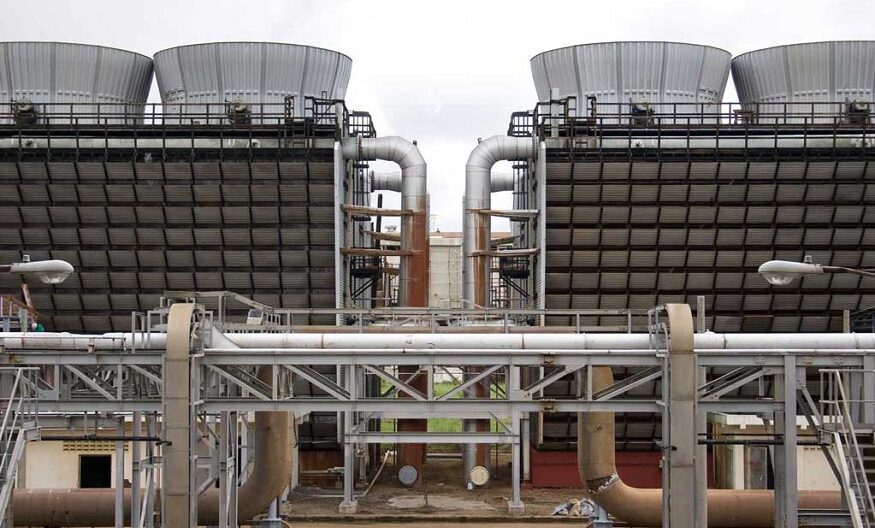
In the industrial sector, cooling towers play a significant role when it comes to regulating as well as managing temperatures for countless procedures: from power generation to manufacturing, and so on. While these structures often go unnoticed, their effective and efficient operation relies heavily on an important but sometimes overlooked element: cooling tower treatment.
It should be noted that the said treatment is crucial with regard to operation since ignoring appropriate water treatment in cooling towers can lead to a myriad of problems. Problems that, if left unaddressed, can have a negative impact on performance, efficiency, and eventually, can pose health and safety risks.
Conversely, implementing an extensive water treatment program pretty much unlocks a number of benefits both for operation and the environment. An integral part of ensuring the right outcomes is cooling tower water treatment.
Cooling tower water treatment: the importance
- Operational efficiency and reliability
For starters, the primary purpose of cooling tower water treatment is to ensure that the efficiency and reliability of the cooling tower system is not compromised in any way. Untreated water is a big no-no because it can lead to a wide range of problems, and the long list includes scale formation, biological growth, corrosion, and so forth.
As unimportant as they may seem, if left untreated, they can have a serious impact on the performance and operational life of a cooling tower system.
Let’s take a closer look at the aforementioned problems:
- Scale formation
In general, scale formation takes place when dissolved minerals that are found in the water precipitate on the surfaces of the cooling tower, together with its components. This, in turn, can reduce heat transfer efficiency and may lead to potential blockages.
- Biological growth
Biological growth, which includes algae, fungi, bacteria, and so forth, can lead to biofouling. Biofouling does not only reduce cooling tower efficiency; it can also lead to a wide array of health issues such as Legionnaires disease, salmonella (and other foodborne ailments), allergic reactions, and so on.
- Corrosion
Corrosion can cause wear and tear on the cooling tower’s structural materials. This, in turn, can lead to leaks, system failures, and the need for premature replacement.
- Regulatory compliance
In addition to addressing the said issues, proper cooling tower treatment by means of an HVS chemical free system and other methods is essential when it comes to regulatory compliance. That is because many industries employ strict environmental regulations with regard to cooling tower discharge.
By performing effective treatment on a timely basis, compliance with the said regulations avoids potential fines as well as penalties. Furthermore, since discharge is properly regulated, it is going to be beneficial for the environment as well. This brings us to our next point…
- Sustainability
A well maintained cooling tower can lead to a cleaner and more sustainable environment. Below are some of the reasons why.
- Reduced water consumption
Appropriate water treatment practices such as bleed-off reduction as well as blowdown recycling can significantly cut down water usage. This, in turn, can minimise environmental impact and lower water bills.
- Cut down chemical discharge
Responsible water treatment can pave the way for more targeted chemical use, which may lead to reduced discharge of chemicals that may harm the environment.
- Lowered energy consumption
Optimum cooling tower performance by means of appropriate water treatment can translate to reduced energy demands for cooling operations. This in turn, can lower carbon footprints and contribute to environmental sustainability.
Cooling tower treatment: the methods
To combat issues that may translate to more serious matters in the long run, different water treatment methods are employed. They are tailor-fit to the specific needs of a particular system based on the quality of incoming water, the type of cooling tower, and the nature of industrial procedures that it supports.
Some of the most-used cooling tower treatment methods are explained below:
- Chemical treatment
Chemical treatment is the most used method for cooling tower treatment. It involves adding certain chemicals to manage scaling, prevent corrosion, and restrict biological growth.
- Calcium ions removal
Calcium ions are important when it comes to achieving different biological functions as well as industrial procedures. However, in certain cases, their presence can pose challenges. This is where calcium ions removal comes in. It is performed to reduce scaling, reduce operational cause, minimise maintenance costs, boost process control, and so forth.
- Physical and mechanical treatment
Physical and mechanical treatment is often performed in an effort to remove suspended solids that may contribute to scaling and biofouling. This treatment often involved the following:
- Filtration – removing particulates from the water
- Softening – removing hardness from the water to reduce the likelihood of scale formation
- Blowdown – a process of removing a portion of water to control dissolved minerals
Summing up
In the end, cooling tower treatment is a complex yet important component of industrial cooling systems. It is an investment that can pave the way for operational efficiency, safer work conditions, and environmental sustainability.
